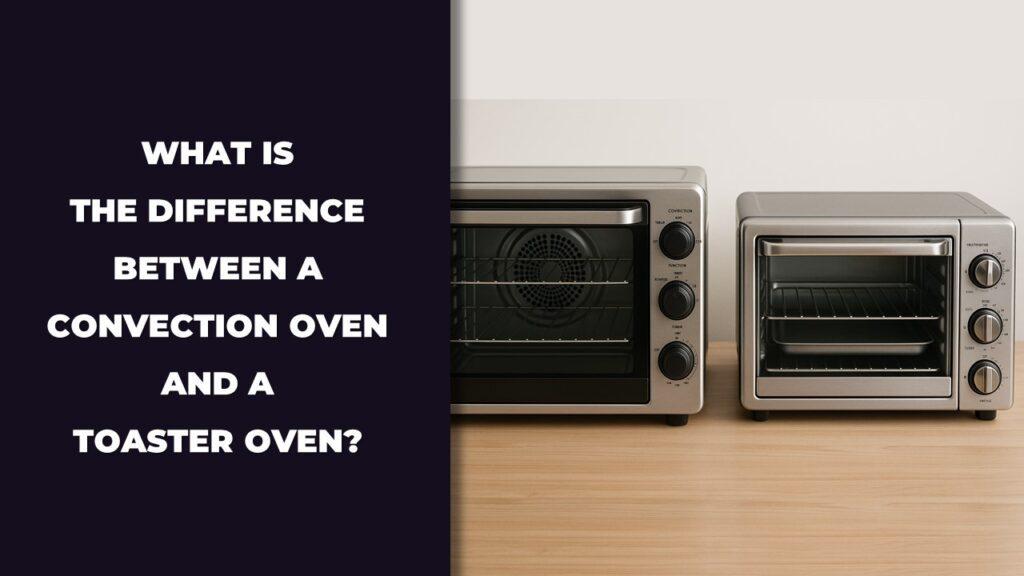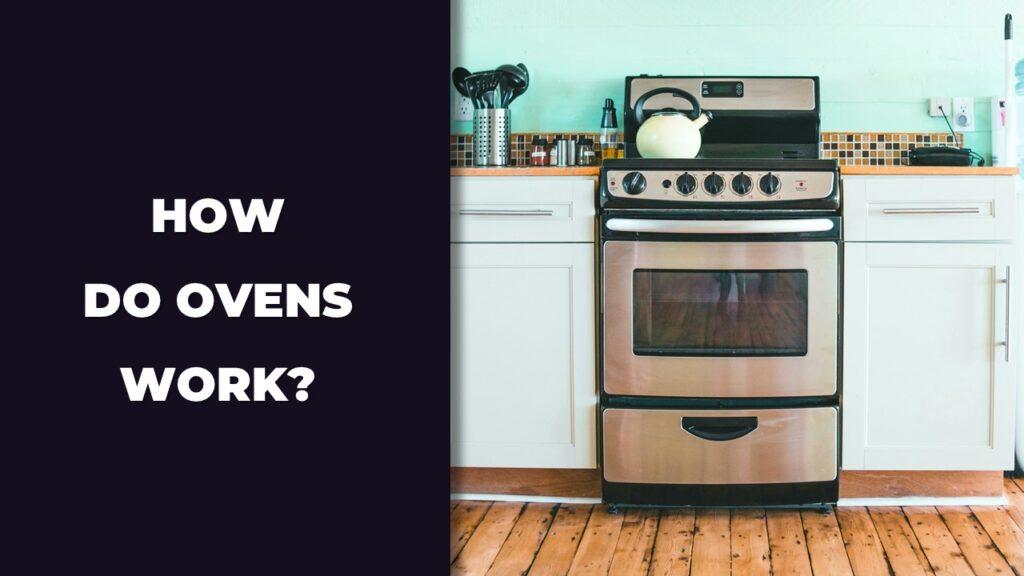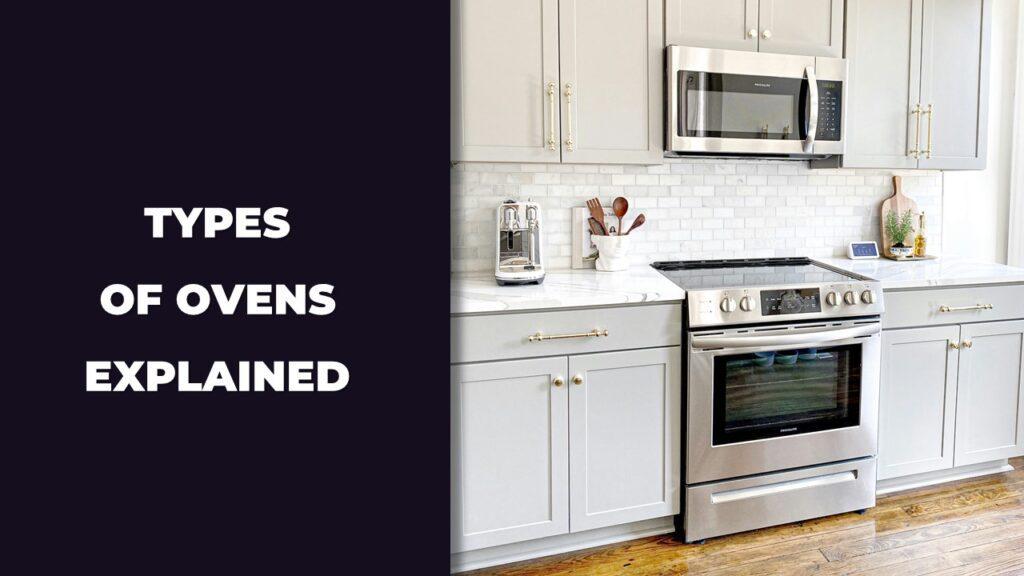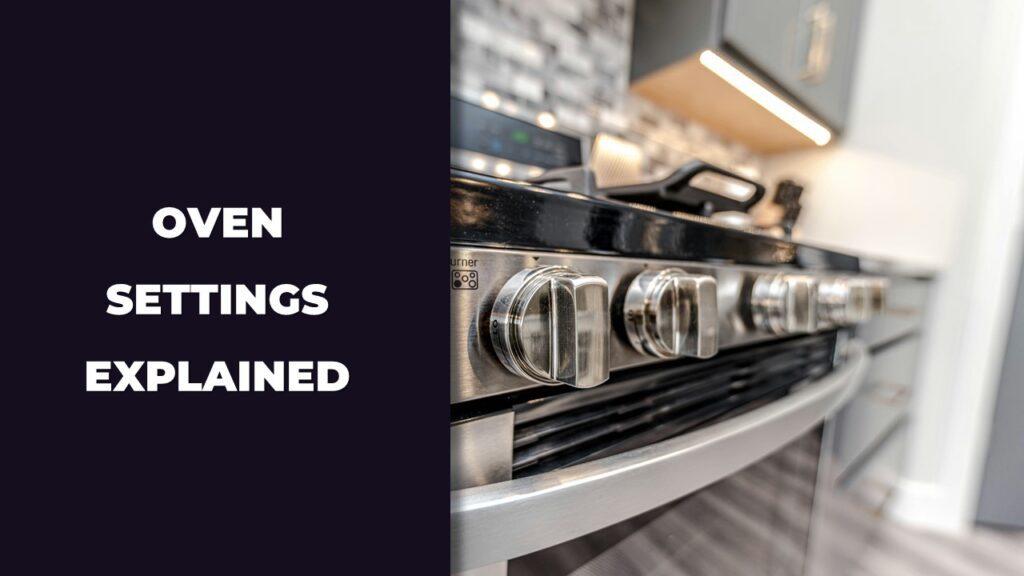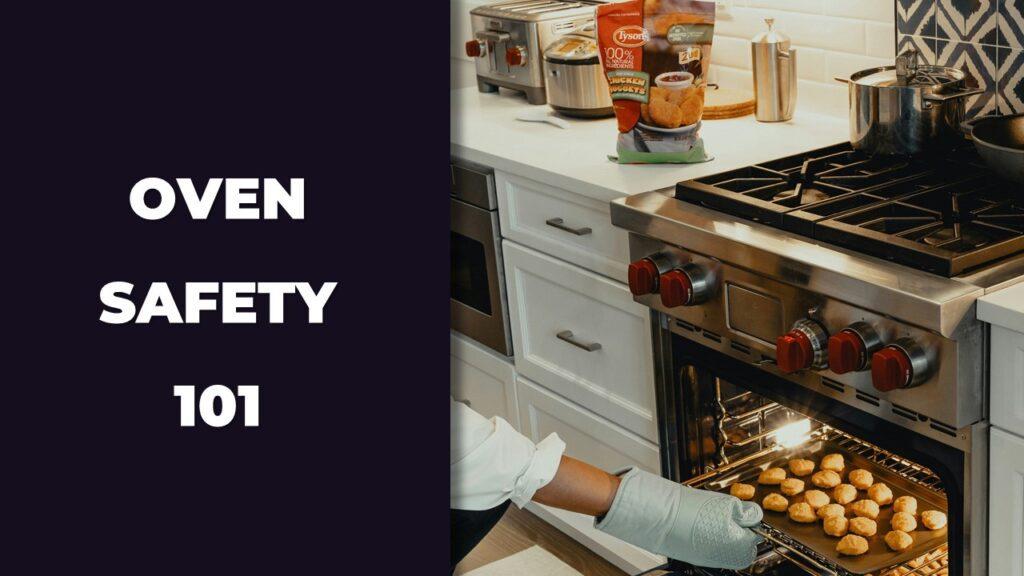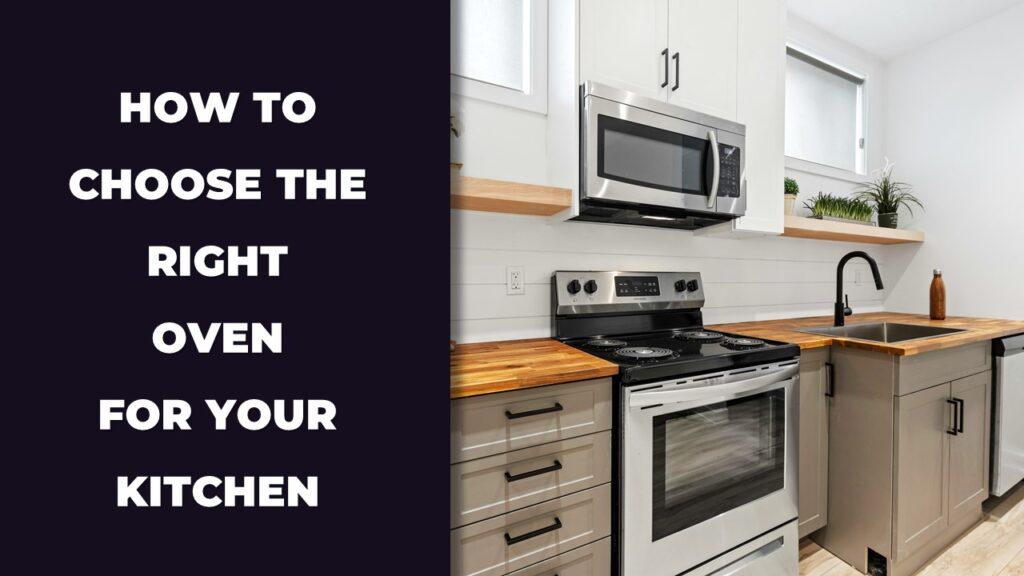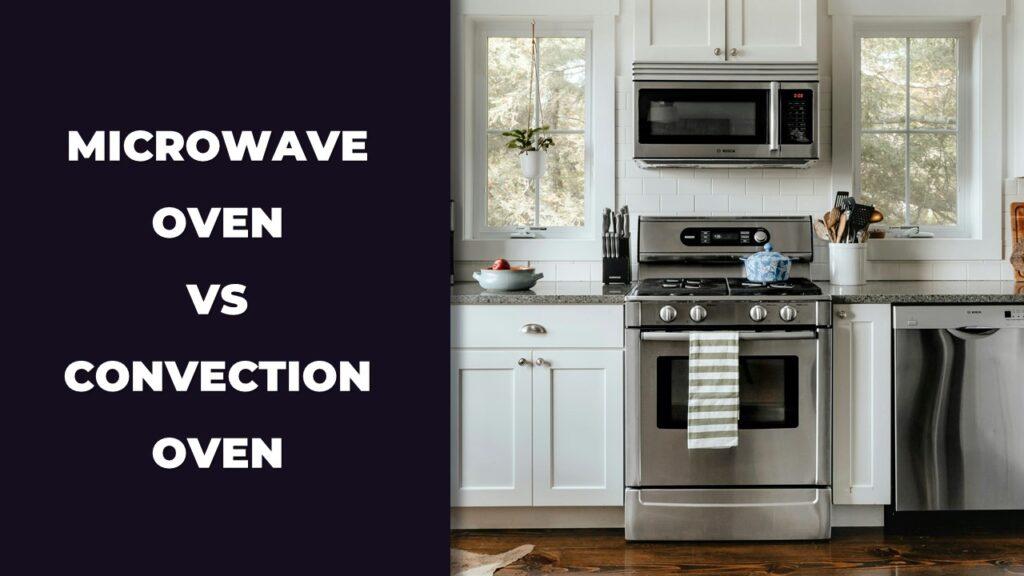
Microwave ovens and convection ovens differ in how they cook food. Microwaves use electromagnetic waves to heat food quickly, which is perfect for reheating or defrosting. Convection ovens use a fan to blow hot air around, giving food a crisp, even finish—great for baking and roasting.
This article breaks down how each oven works, what they’re best used for, and how to choose the right one for your kitchen.
How a Microwave Oven Works
A microwave oven works by using electromagnetic waves to heat food quickly from the inside out. These waves target water molecules in your food, causing them to vibrate and produce heat. This makes microwave ovens ideal for reheating leftovers, defrosting frozen items, or cooking quick meals in minutes.
Here’s how it works and what you should know before using one in your kitchen.
What Are Microwaves And How Do They Cook Food?
Microwaves are a type of energy that bounce around inside the oven’s metal interior. When these waves hit food, they make the water, fat, and sugar molecules inside start vibrating. That movement generates heat, which cooks the food.
This method is different from regular ovens. Instead of heating the air first, microwaves heat the food directly. That’s why there’s no preheating. It also explains why food sometimes heats unevenly if it’s not stirred or rotated.
Types Of Microwave Ovens And Their Features
There are several types of microwave ovens, each with its own use:
- Solo Microwave: Basic model, good for reheating, defrosting, and simple meals.
- Grill Microwave: Includes a heating coil, allowing for some browning or grilling.
- Convection Microwave: Adds a fan and heating element so you can bake or roast.
- Inverter Microwave: Provides steady, consistent power, giving more even results.
Many modern microwaves also offer extras like preset cooking menus, steam options, smart sensors, or app-based controls.
What Can You Cook In A Microwave?
Microwaves are great for:
- Reheating leftovers
- Defrosting meat or frozen meals
- Cooking instant noodles or oatmeal
- Steaming vegetables
- Melting butter or chocolate
- Making popcorn or mug cakes
They’re less suitable for foods that need crisping, like cookies or roasted chicken.
Advantages Of Microwave Ovens
Microwaves are loved for their speed and simplicity. Here are the main benefits:
- Fast Cooking: Most meals heat up in just a few minutes.
- No Preheat Time: Just place your food inside and press start.
- Energy Efficient: Uses less electricity for short tasks.
- Compact Design: Fits easily on most countertops.
- Simple To Use: User-friendly controls and one-touch buttons.
If you’re short on time or just want a quick bite, microwaves are a solid choice.
Drawbacks To Know
Microwaves also have a few limitations:
- No Crispy Texture: They don’t brown food unless paired with a grill function.
- Uneven Heating: Some foods heat unevenly, especially thicker items.
- Size Restrictions: Small interiors may not fit large trays or cookware.
- Container Caution: Only use microwave-safe glass, ceramic, or certain plastics.
For quick and easy meals, a microwave is hard to beat. But for better texture or more complex dishes, you may need something more powerful.
How a Convection Oven Works
A convection oven works by using a fan to circulate hot air around the food, cooking it more evenly and often more quickly than a traditional oven. The moving air helps remove cooler pockets of heat, so everything inside cooks at a consistent temperature. This method makes it ideal for baking, roasting, and browning dishes that need a crispy or golden finish.
Here’s a closer look at how it works and why many home cooks prefer it for more than just everyday meals.
What Is a Convection Oven and What Makes It Different?
A convection oven has all the basics of a regular oven, but it also includes a built-in fan and an exhaust system. These additions help move hot air around the food, rather than letting it sit still inside the oven cavity.
This constant movement of air makes a big difference. It allows food to cook more evenly, and it helps speed up the process slightly. Unlike a microwave, which heats food from the inside using energy waves, a convection oven works from the outside in—much like a traditional oven, only more efficiently.
Types of Convection Ovens
There are a few common types of convection ovens, and each one suits different cooking setups:
- Electric Convection Oven: Uses electric heating elements along with a fan. Heats evenly and is common in most households.
- Gas Convection Oven: Runs on natural gas or propane and uses a fan to spread the heat. Often found in professional kitchens.
- Countertop Convection Oven: A compact version that sits on the counter. Great for small kitchens or extra oven space.
- Convection Oven with Steam or Air Fry Function: Some newer models combine convection with steam baking or air frying for extra flexibility.
The layout and size may differ, but the fan-driven hot air is what ties them all together.
What Can You Cook in a Convection Oven?
Convection ovens are great for a wide variety of foods. Here are some common ones:
- Baked goods like cookies, pies, muffins, and biscuits
- Roasted vegetables and meats
- Sheet pan dinners
- Casseroles and baked pasta dishes
- Pizza and flatbreads
- Crispy-skinned poultry, like chicken wings or whole roast chicken
The even heat helps brown the top while cooking the inside thoroughly, which is why baked foods tend to come out better in convection ovens.
Advantages of Convection Ovens
There are several reasons to use a convection oven:
- Even Cooking: The fan keeps heat circulating, reducing hot spots.
- Faster Results: Most foods cook quicker than in a standard oven.
- Better Browning: Great for golden crusts and crisp textures.
- More Efficient for Large Meals: Cooks multiple trays of food more evenly.
- Versatile Uses: Good for baking, roasting, toasting, broiling, and even dehydrating in some models.
If you enjoy baking or cooking large meals, a convection oven is a reliable workhorse.
Disadvantages to Consider
While convection ovens offer a lot, there are a few things to watch out for:
- Requires Preheating: Unlike microwaves, you need to wait for it to reach temperature.
- Learning Curve: You may need to adjust cook times and temperatures from standard recipes.
- Drying Effect: Can dry out food if you’re not careful, especially delicate dishes.
- Size: Larger models take up more space and may need installation.
- Price: Full-sized models often cost more than basic microwave ovens.
For many home cooks, these trade-offs are worth it, but it’s good to know what to expect before switching to convection cooking.
Microwave Oven vs Convection Oven (Feature-by-Feature Breakdown)
Microwave ovens and convection ovens differ in how they heat, cook, and handle food textures. Microwaves cook faster and are ideal for reheating or simple meals, while convection ovens cook more evenly, brown food better, and work well for baking or roasting. Choosing between them depends on what, how, and how often you cook.
Here’s a breakdown of the key features that separate the two.
Cooking Speed and Time Efficiency
Microwaves win when it comes to raw speed. They can heat or cook most foods in just a few minutes without needing preheat time. This makes them a top pick for busy people or anyone needing fast results.
Convection ovens are faster than traditional ovens, thanks to their fan system, but not as quick as microwaves. They do, however, deliver better quality results for most baked or roasted dishes.
Texture and Browning Results
Microwaves are not great for texture. They heat food but don’t brown it, so you won’t get crispy or golden surfaces. Food often comes out soft or soggy if it’s not covered or turned properly.
Convection ovens, on the other hand, excel at texture. They crisp up food, brown surfaces, and create flaky or golden finishes that microwaves can’t replicate. This makes them ideal for cookies, roasts, or any dish where texture matters.
Temperature Control and Cooking Precision
Microwaves use power levels, not exact temperatures. This works for simple tasks like heating soup or thawing meat, but it lacks the precision needed for more complex recipes.
Convection ovens offer full temperature control. You can set and hold exact temps, making them better for baking, slow roasting, or cooking multiple items at once without burning or undercooking.
Energy Efficiency and Power Use
Microwaves use less energy per task, especially for short bursts like reheating leftovers. They only heat the food, not the air or oven walls, which makes them efficient for quick jobs.
Convection ovens use more power, but they’re more efficient than traditional ovens. The fan helps cook faster, which can save some energy during long cooks. Still, for everyday quick meals, microwaves are more power-friendly.
Food Types and Recipe Compatibility
Microwaves are good for:
- Reheating meals
- Defrosting frozen items
- Cooking soft or wet foods
- Making popcorn, noodles, or mug cakes
Convection ovens are better for:
- Baking cookies, cakes, or bread
- Roasting meat or vegetables
- Crisping pizza or pastries
- Multi-tray meals or large portions
Each appliance has its strengths depending on the food you cook most often.
Space and Size Requirements
Microwaves are compact and easy to place on a countertop. They’re a smart choice for small kitchens, dorms, or RVs. Some models can even be installed over the range to save space.
Convection ovens take up more room. Full-sized models are often built-in or freestanding and require proper ventilation. Countertop convection models exist, but even those are bulkier than most microwaves.
Ease of Use and Learning Curve
Microwaves are user-friendly. Most have one-touch buttons, presets, and simple controls. Even someone new to cooking can figure one out quickly.
Convection ovens take a little more practice. You need to learn how to adjust times and temperatures, especially if you’re switching from a standard oven. It’s not difficult, but it’s less intuitive than a microwave.
Cleaning and Maintenance
Microwaves are easy to clean. A quick wipe with a damp cloth usually does the job. Food splatters are common, but removable trays or covers help.
Convection ovens need more effort. Crumbs and grease can build up on racks, trays, and fan covers. Self-cleaning options help, but some parts still need hand-cleaning.
Durability and Lifespan
Microwaves usually last 7 to 10 years with light use. Frequent slamming of the door or running it empty can shorten that lifespan.
Convection ovens, especially built-in ones, can last longer—often 10 to 15 years or more. Their parts are usually more durable, though repairs can be more expensive.
What Is a Convection Microwave Oven?
A convection microwave oven combines the functions of a regular microwave and a convection oven in one unit. It can reheat and defrost food using microwaves and also bake, roast, or crisp using hot air circulation.
This hybrid design gives you more flexibility in a compact space. You can use it just like a microwave when you’re in a rush or switch to convection mode for better cooking results.
Here’s what a convection microwave oven can do:
- Reheats and defrosts like a regular microwave
- Bakes and roasts like a convection oven
- Saves space, ideal for small kitchens or apartments
- Crisps and browns foods that a regular microwave cannot
- Offers dual modes—you can even combine microwave and convection settings for faster, even cooking
- Perfect for multi-purpose use without needing two separate appliances
If you’re short on space but want more than basic microwave functions, this combo unit is a smart solution.
Which One Should You Choose Based on Your Needs?
The best choice between a microwave, convection oven, or combo depends on your cooking habits, available space, and how much time you spend in the kitchen. If you mostly reheat or cook quick meals, go with a microwave. If you cook larger meals or want crisp, baked textures, choose a convection oven. And if you want both in one, a convection microwave offers the best of both worlds.
For Busy Professionals or Students
If speed matters more than texture, stick with a microwave.
- Reheats meals in minutes
- No preheat time needed
- Great for simple, quick meals
- Compact and budget-friendly
For Home Bakers and Large Families
If you need cooking flexibility and can spare the space, a convection oven fits better.
- Handles multiple trays and big portions
- Better for baking, roasting, and browning
- Offers full temperature control
- Ideal for batch cooking or weekend meal prep
For Small Kitchens or Dual Needs
If you want one appliance that does both jobs, go for a convection microwave.
- Saves counter or cabinet space
- Offers both quick heating and full baking functions
- Great for apartments, RVs, or second kitchens
- Works well for households with mixed cooking needs
Use Case Table: Lifestyle vs Appliance Type
| Lifestyle Type | Best Appliance | Why It Fits |
| Student in a dorm | Microwave Oven | Fast, compact, and affordable |
| Family that bakes often | Convection Oven | Even heat, larger capacity, better browning |
| Apartment dweller | Convection Microwave Oven | Space-saving with flexible cooking modes |
| Busy worker with no time | Microwave Oven | Instant meals and reheating on the go |
| Home cook who hosts often | Convection Oven | Handles big meals and cooks evenly across trays |
| Small kitchen household | Convection Microwave Oven | All-in-one solution without giving up counter space |
Expert Tips: How to Use Each Oven the Right Way
To get the best results from your microwave or convection oven, use each one based on its strengths. Microwaves are perfect for quick meals, but they need careful placement and stirring for even heating. Convection ovens require preheating and some timing adjustments, but they deliver better texture and even cooking.
Here are some practical tips to help you use each oven properly:
Microwave Oven Tips
- Use microwave-safe containers only; avoid metal or non-labeled plastic.
- Stir food halfway through to prevent cold spots.
- Cover dishes loosely to trap moisture and reduce splatter.
- Let food sit for a minute after heating to finish cooking evenly.
- Use power level settings to avoid overheating delicate foods.
Convection Oven Tips
- Always preheat before placing food inside.
- Use shallow pans to allow air to circulate better.
- Reduce baking temperature by 25°F from standard recipes.
- Avoid overcrowding trays; space helps food cook evenly.
- Rotate pans halfway through baking for uniform browning.
Using each appliance the right way can save time, improve taste, and help your food come out just the way you want.
Conclusion
Microwave ovens and convection ovens serve different needs. If your goal is speed and simplicity, the microwave is a go-to appliance. It’s compact, fast, and perfect for reheating, defrosting, or cooking small meals with minimal fuss.
On the other hand, a convection oven is a better fit if you value texture and even cooking. It handles baking, roasting, and crisping with ease, making it ideal for home cooks who prepare full meals or love baking.
Still torn? A convection microwave might be the sweet spot. It gives you the speed of a microwave and the performance of a convection oven, all in one unit. Whatever you choose, base it on your cooking style, kitchen space, and how much hands-on time you’re willing to give.
Related FAQs
Can a Convection Oven Reheat Food Like a Microwave?
Yes, a convection oven can reheat food, but it takes longer and may dry out some dishes. Microwaves reheat faster and keep moisture in, which makes them better for quick reheating.
Is Microwave Radiation Dangerous or Safe for Health?
Microwave radiation is safe for health when used properly. The waves stay inside the oven and stop once the door is opened, according to FDA safety standards.
What Type of Containers Should You Avoid in Microwaves?
Avoid metal, foil, or plastic containers that aren’t labeled microwave-safe. These materials can cause sparks, melt, or release harmful chemicals into food.
Do Convection Ovens Use More Electricity Than Microwaves?
Yes, convection ovens generally use more electricity than microwaves, especially for longer cook times. Microwaves are more efficient for short heating tasks.
Can a Microwave Brown Food at All?
Regular microwaves can’t brown or crisp food. However, some models with grill or convection features can add some browning if used in combination modes.
What’s the Average Lifespan of Both Ovens?
Microwaves typically last 7 to 10 years with regular use. Convection ovens can last 10 to 15 years or more, especially if properly maintained.

At our core, we’re a group of passionate households and gardening tools and appliances users and enthusiasts. We dive deep into the world of tech, especially when it’s about your household or gardening electric items. We try to provide as much value to the readers with our information and how to blog articles as possible. For affiliate articles our honest and transparent reviews of essential tech products are rooted in real-world experience. We take great satisfaction in offering unbiased evaluations, ensuring that you can make informed decisions when investing in your desired techs.

